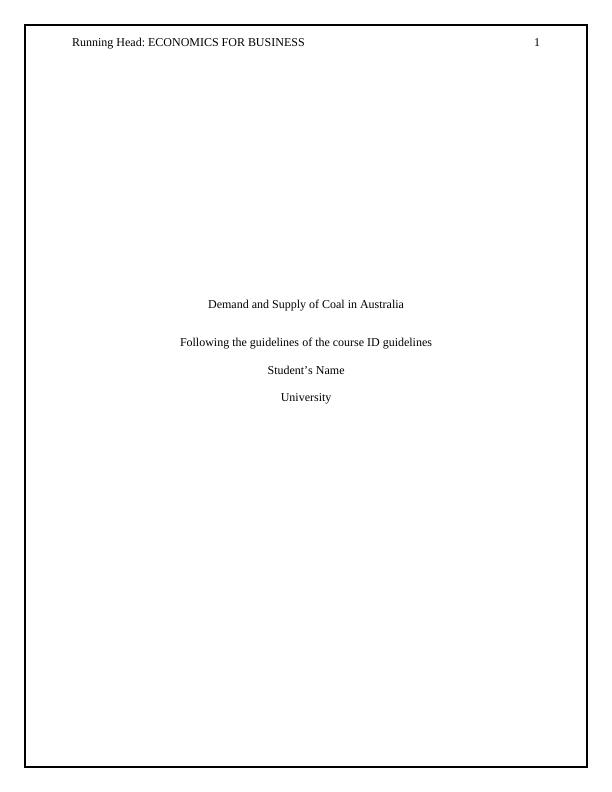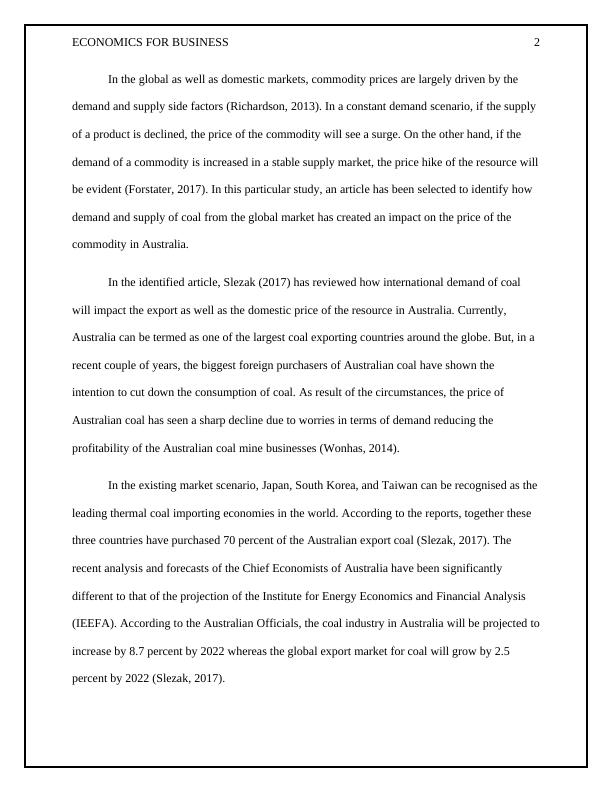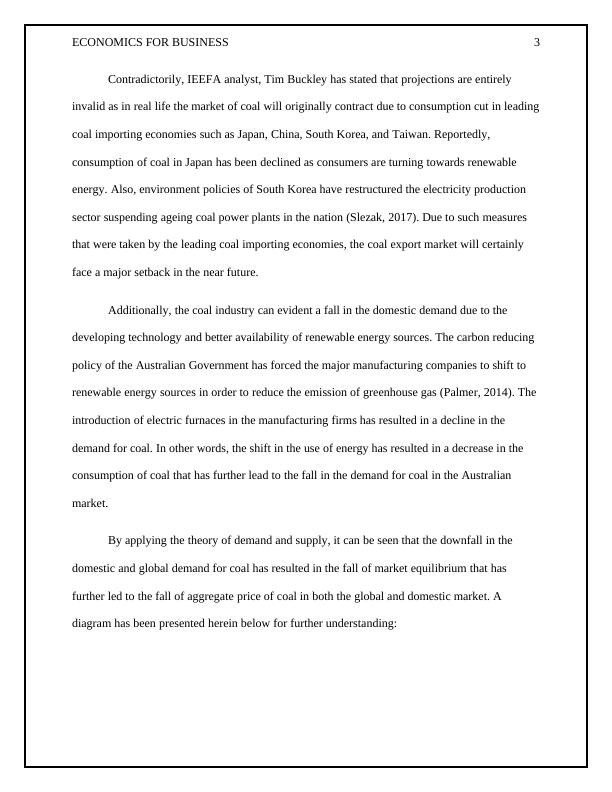HI5003 - Demand and Supply of Coal in Australia
Added on 2020-03-04
6 Pages1393 Words55 Views
Running Head: ECONOMICS FOR BUSINESS1Demand and Supply of Coal in AustraliaFollowing the guidelines of the course ID guidelinesStudent’s NameUniversity

ECONOMICS FOR BUSINESS2In the global as well as domestic markets, commodity prices are largely driven by the demand and supply side factors (Richardson, 2013). In a constant demand scenario, if the supply of a product is declined, the price of the commodity will see a surge. On the other hand, if the demand of a commodity is increased in a stable supply market, the price hike of the resource willbe evident (Forstater, 2017). In this particular study, an article has been selected to identify how demand and supply of coal from the global market has created an impact on the price of the commodity in Australia. In the identified article, Slezak (2017) has reviewed how international demand of coal will impact the export as well as the domestic price of the resource in Australia. Currently, Australia can be termed as one of the largest coal exporting countries around the globe. But, in a recent couple of years, the biggest foreign purchasers of Australian coal have shown the intention to cut down the consumption of coal. As result of the circumstances, the price of Australian coal has seen a sharp decline due to worries in terms of demand reducing the profitability of the Australian coal mine businesses (Wonhas, 2014). In the existing market scenario, Japan, South Korea, and Taiwan can be recognised as theleading thermal coal importing economies in the world. According to the reports, together these three countries have purchased 70 percent of the Australian export coal (Slezak, 2017). The recent analysis and forecasts of the Chief Economists of Australia have been significantly different to that of the projection of the Institute for Energy Economics and Financial Analysis (IEEFA). According to the Australian Officials, the coal industry in Australia will be projected toincrease by 8.7 percent by 2022 whereas the global export market for coal will grow by 2.5 percent by 2022 (Slezak, 2017).

ECONOMICS FOR BUSINESS3Contradictorily, IEEFA analyst, Tim Buckley has stated that projections are entirely invalid as in real life the market of coal will originally contract due to consumption cut in leadingcoal importing economies such as Japan, China, South Korea, and Taiwan. Reportedly, consumption of coal in Japan has been declined as consumers are turning towards renewable energy. Also, environment policies of South Korea have restructured the electricity production sector suspending ageing coal power plants in the nation (Slezak, 2017). Due to such measures that were taken by the leading coal importing economies, the coal export market will certainly face a major setback in the near future. Additionally, the coal industry can evident a fall in the domestic demand due to the developing technology and better availability of renewable energy sources. The carbon reducing policy of the Australian Government has forced the major manufacturing companies to shift to renewable energy sources in order to reduce the emission of greenhouse gas (Palmer, 2014). The introduction of electric furnaces in the manufacturing firms has resulted in a decline in the demand for coal. In other words, the shift in the use of energy has resulted in a decrease in the consumption of coal that has further lead to the fall in the demand for coal in the Australian market. By applying the theory of demand and supply, it can be seen that the downfall in the domestic and global demand for coal has resulted in the fall of market equilibrium that has further led to the fall of aggregate price of coal in both the global and domestic market. A diagram has been presented herein below for further understanding:

End of preview
Want to access all the pages? Upload your documents or become a member.
Related Documents
Demand and Supply of Coal Of Australia In International Marketlg...
|10
|1721
|407
HI5003 - Economics - Demand and Supply of LNG in Australialg...
|7
|1463
|43
Demand and Supply of Coal in Australialg...
|6
|1163
|190
Assess Japan's current overall economic situationlg...
|4
|618
|90
Economic Principles and Decision Makinglg...
|19
|1325
|79
HI5003 - Demand and Supply of Copper in Australia - Reportlg...
|8
|1556
|46
